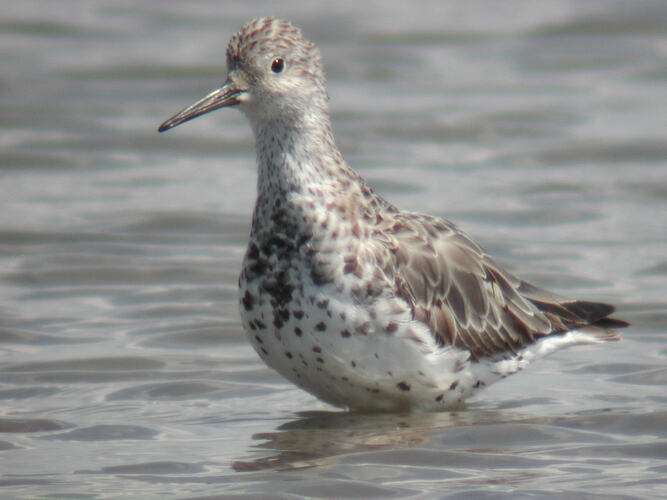General Description
Non-breeding: Upper body mottled light grey, underparts white. White marking on rump and white wing bar when flying. Curved white stripe above the eye. Bill narrow and black. Breeding: Upperparts red-brown and black, underparts white with black spots at the side and on the breast. Body up to 29 cm long.
Biology
Great Knots migrate from the northern hemisphere, where they breed, to Australia in summer. They arrive in September and depart in March.
Distribution
Worldwide. Mainland Australia and Tasmania.
Habitat
Intertidal mudflats.
More Information
-
Animal Type
-
Animal SubType
-
Brief Id
Pale grey body, white underneath, white stripe above eye, white rump and wingbar in flight.
-
Colours
Grey, White
-
Habitats
-
Diet
Carnivore
-
Diet Categories
Insects, Invertebrates
-
Endemicity
-
Conservation Statuses
CITES: Not listed, FFG Threatened List: Critically Endangered, EPBC Act 1999: Critically Endangered, IUCN Red List: Endangered
-
Taxon Name
-
Common Name
Great Knot
-
Kingdom
-
Phylum
-
Subphylum
-
Class
-
Order
-
Family
-
Genus
-
Species Name
tenuirostris

